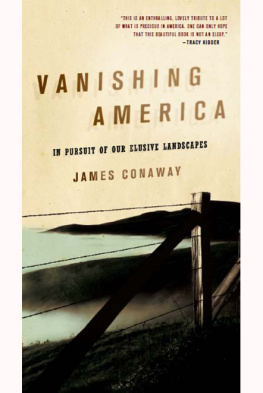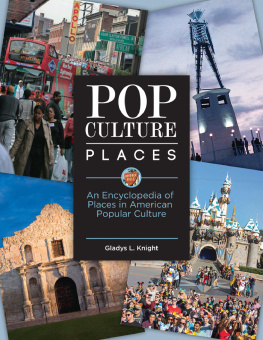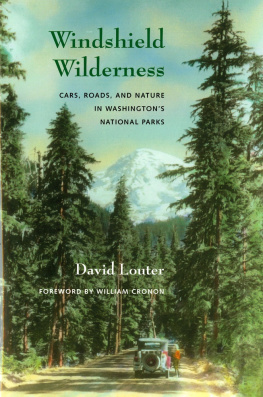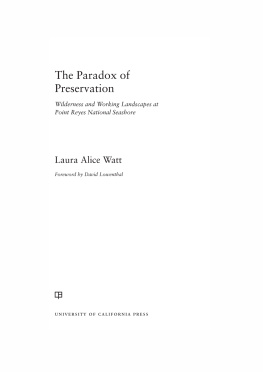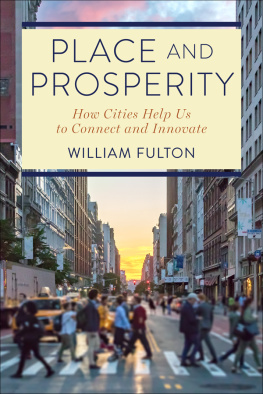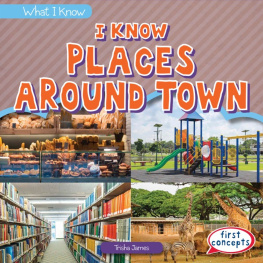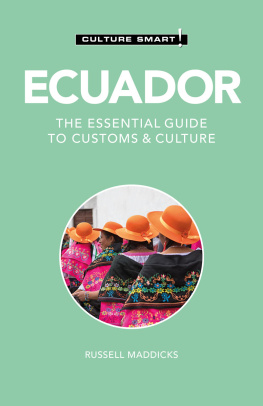VANISHING AMERICA
Also by James Conaway
Fiction
The Big Easy
Worlds End
Nonfiction
Judge: The Life and Times of Leander Perez
The Texans
The Kingdom in the Country
Napa: The Story of an American Eden
Memphis Afternoons
The Smithsonian: 150 Years of Adventure
Americas Library: The Story of the Library of Congress, 18002000
The Far Side of Eden: New Money, Old Land, and the Battle for Napa Valley

VANISHING
AMERICA
IN PURSUIT OF OUR
ELUSIVE LANDSCAPES
James Conaway
COUNTERPOINT
BERKELEY
Copyright 2007 by James Conaway. All rights reserved under International and Pan-American Copyright Conventions.
Library of Congress Cataloging-in-Publication Data Conaway, James.
Vanishing America : in pursuit of our elusive landscapes / James Conaway.
p. cm.
ISBN-13: 978-1-6190-2202-7 1. United StatesDescription and travel. 2. Conaway, JamesTravelUnited States. 3. United StatesHistory, Local. 4. Landscape changesUnited States. 5. LandscapeSocial aspectsUnited States. 6. Landscape protectionUnited States. 7. Historic preservationUnited States. 8. Cultural propertyProtectionUnited States. 9. United StatesSocial conditions1980- 10. National characteristics, American. I. Title.
E169.Z83C66 2007
917.30492dc22
2007010643
Cover design by Kimberly Glyder Design
Interior design by David Bullen Design
Counterpoint
2117 Fourth Street
Suite D
Berkeley, CA 94710
www.counterpointpress.com
Distributed by Publishers Group West
10 9 8 7 6 5 4 3 2 1
For Penny,
and for Johnny Lang
CONTENTS
The pastoral ideal... enabled the nation to continue defining its purpose as the pursuit of rural happiness while devoting itself to productivity, wealth, and power.
LEO MARX, The Machine in the Garden
TROUBLE ARRIVED NOT IN THE GUISE OF A STRANGER, but in that of a neighbor. My wife, Penny, and I had acquired an acre and a half in the shadow of Virginias Blue Ridge, and the owner of a nearby winery decided to take advantage of a law passed to encourage farming. He would sell raucous events along with his wine, what may seem a small transgression to you, but as anyone who lives in the country knows, everything here is a matter of scale. Thus began a classic land-use fight already too familiar to me as a writer. The conflict would involve meetings and stratagems, testimony before various elected and appointed bodies, and, of course, lawyers.
The serenity and timeless quality of our particular place were threatened even as our social life improved with all the meetings we attended. During that fightstill unresolvedI looked around and saw everywhere fields and structures falling before a procession of would-be property owners much like ourselves: weekenders, city slickers, cocktail farmers. But many seemed indifferent to the past and hostile to even the smallest sacrifice for the general good, even if gratifying their desires meant wrecking views for others and sullying the way of life that had attracted them in the first place. At one point, I said to Penny, Lets just enjoy it here for as long as it lasts.
Later, I marveled at how natural those words sounded, and at how readily Americans accept them. If everyones bit of land is threatened, then so is our collective happiness. Reliance upon permanence is what home is about, yet the nations identity, and much of the ground that manifests it, is being radically transformed by opportunism as we ourselves are by toxic political and social orthodoxies.
The modern conservation movement was born when there was still plenty of intact America to conserve. Back then, the notion that a totality of the natural and the built environments could be changed in a lifetime would have seemed far-fetched. No more. Yet individual concern for the integrity of definitive bits of America is discounted as sentimental or attacked as an obstruction to the overriding quest for material gratification and maximum profits in minimal time.
I HAVE BEEN WRITING about these things in one way or another for years. My interest stemmed from a childhood involvement with the outdoors, once a common American experience but not so today, when products isolate children from unruly nature and leave them with technological addictions and what researchers are now calling natural deficit disorder. That interest was rekindled in my adult years by my close involvement with some of Americas phenomenal real estatethe public lands of the intermountain West, including the northern Rockies, the Colorado Plateau, the desert Southwest, and the heavily timbered coasts of California, Oregon, and Washington. There I traveled for half a year in the mid-1980s, talking to people who used these lands, struck by two obvious truths: The seeming inviolability of protected, iconic landscapes is a myth; and local peoples opinions of those places vary as much as any in America and are imbued with all the passion and contradictory beliefs of a historically heterogeneous society.
The land provided a context for debating what the country and its citizenry should be, a volatile argument as old as the republic and farther from resolution than in frontier days. But people had so affected these places in one way or another that theywehad become essential parts of the landscape. Even de jure wilderness, which had been so declared by the U.S. Congress, reflected the contending desires of human beings, some wanting to keep the land just so in perpetuity, others wanting to capitalize on it by whatever means necessary. Beyond these protected areas were places that had defined themselves decades and even centuries before, and they, too, were becoming obsolete: The physical and spiritual home of the American Indian, and the source of sustenance for countless miners, lumberjacks, fishermen, and farmers, were subject to unprecedented, accelerating change.
Yet these groups abiding influence on the land was an intrinsic part of it and a marker of American civilization; to lose that to development of one sort or anothermalls, McMansions, highways, power lines, gas exploration rigs, and so onwas to be deprived, in perpetuity, of what is arguably the real America. These concerns werent limited to the West, of course, something that became more obvious to me as soon as I recrossed the Rockies. A new awareness had worked its way into my view of every place I went, from New Orleans to Nantucket, upstate Maine to piedmont Virginia, the lands and the enduring elements of local cultures, physical and social, seemingly as tenuous as the glaciers and traditional livelihoods of the West.
Cultural landscape wasnt a phrase commonly used in the 1980s, but today its often on the lips of landscape architects, theorists, academics, bureaucrats, and activists. Theres a growing interest in keeping not just historic or emblematic structures whole, but also their settings, in an attempt to preserve whats left of the country, whether built or natural. Cultural character is inherent in the whole, the argument goes; even a structure as august and recognized as the U.S. Capitol is seriously diminished by its wrecked surroundings. Yet this realization lags far behind the ongoing impulse to create structural islands of privilege in a discordant terrestrial sea.
Cultural landscapes reflect an activity, or a characteristic, that shaped them historically and are particularly important for that reason; in almost all cases, however, the natural component is essential for the integrity of both place and vision. But the natural aspect is often considered last, or not at all; we speak of improvements to land to describe the destruction of its character and the use of concrete and other things to entomb its timeless past. The obvious benefits of naturerepose, familiarity, a vital link between life and livelihoodare increasingly difficult to quantify in a fractured, transient, opportunistic society that demands it.
Next page
